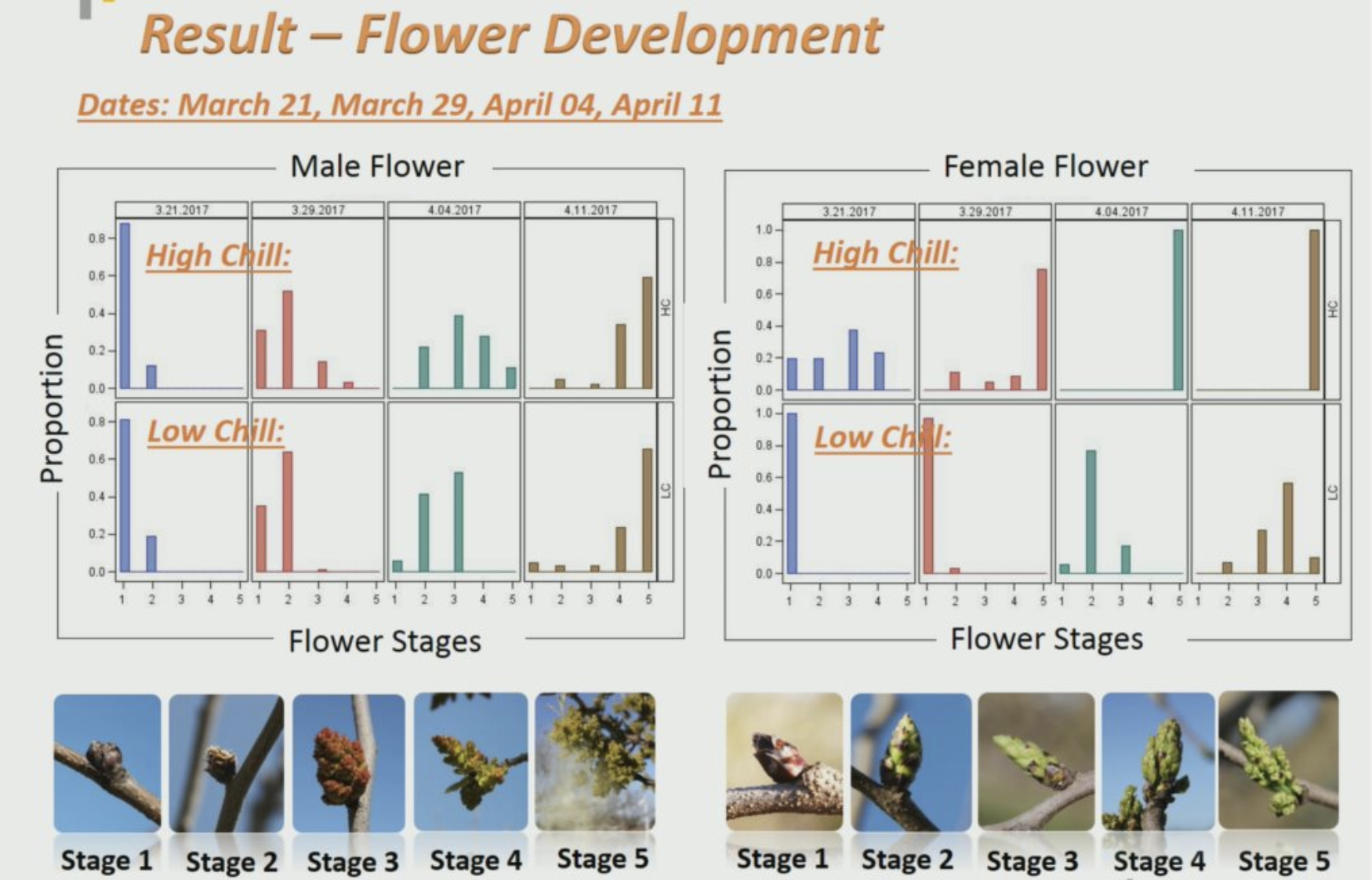UC Davis pistachio expert Lu Zhang is on a team that has developed an online chill calculator for growers.
While almond growers are worried about freezing temperatures this year, pistachio growers worry about it every year. That’s because a certain amount of chill is necessary for pistachio flower quality and solid yields at harvest.
Since chill is always an important factor for pistachio growers, UC Davis researchers have developed an online calculator that can help growers use temperatures to predict their harvest date and yield.
“By using our website, when you input your orchard location, your cultivar and the bloom date, you can get this feedback,” Zhang told growers at a Pistachio Research Board event earlier this year. “You can see the nut size, firmness, kernel size, nut split rate, and the predicted optimum harvest date.”
“You input that information, and you get the feedback. If you have interest in predicting nut growth by using our model, or using our website, you’re very welcome to contact us,” Zhang said.
She can be contacted at luuzhang@ucdavis.edu; her colleague Louise Ferguson can be reached at lferguson@ucdavis.edu.
Why does chill matter to pistachios?
“Male and female flowers in the high chill locations developed much batter than in the low chill locations, you can see here,” Zhang said. “Especially the female flowers.”
Low chill also caused problems of asynchony--male flowers being open for pollination before female flowers are ready to open and accept pollen.

“Sugar is a source that supports strong flower development in high-chill trees,” Zhang said.
At bloom, she told the crowd, flowers with high chill had higher sugar content and produced better bloom than flowers with low chill.
One factor in chill is fog, Zhang said: with more fog, tree temperatures are lower. But drought conditions can mean less fog, higher temperatures, and less chill.
For more information about Zhang’s work, email her or go to the UC Davis website.
